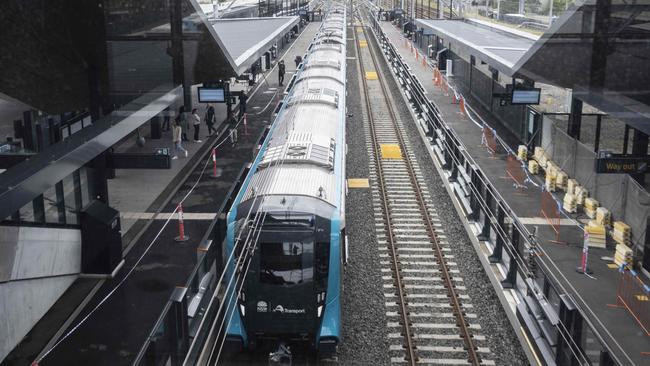New government body planned to ensure thousands of new homes built around Sydney stations
A new government body aimed at speeding up housing development plans in NSW could be tasked with ensuring major projects don’t stall around new Metro stations and existing heavy rail.
NSW
Don't miss out on the headlines from NSW. Followed categories will be added to My News.
A new government body aimed at slashing red tape and sidestepping local councils could be tasked with ensuring major housing developments don’t stall around new Metro stations and existing heavy rail, according to confidential discussions between the NSW Government and the development industry.
An industry source said conversations over future development around transport hubs had revealed the government is considering an industry-push for a government development authority charged with doing the planning, zoning, approvals and land acquisition to consolidate land around train and Metro stations.
It comes as industry worries fragmented ownership of land surrounding stations could hobble plans to build thousands of homes near public transport, while the move would also take major planning responsibilities off of local councils.
“If you want to control the outcome, you’ve got to grab it by the scruff of the neck,” an industry source told The Telegraph.
Planning Minister Paul Scully wouldn’t confirm what had been said in discussions between the NSW Government and the development industry.

“We don’t discuss cabinet proposals and would urge people to wait and see the final decision and announcement,” he said.
An industry source said the latest discussions had identified a one-kilometre radius around future Metro stations and existing train stations as prime for densification, starting with high-rises closer to the centre, with height limits gradually dropping further out.
Eamon Waterford, Committee for Sydney CEO, said the discussions were promising as housing around other stations had been “undercooked”.
“Whenever we’re building a new train line, we should be building dense communities around the station, so we can get as many people using these great and expensive pieces of infrastructure,” he said.
“We’ve massively undercooked the density of some of these locations – it’s heartening to hear the government say they’ll come back and put that density back in.

“The next step is to look at existing train stations – there are plenty of train stations in Sydney dropped in the middle of low-density, low amenity communities which could be transformed with densification.”
He nominated stations on the North Shore train line between Chatswood and Hornsby like Roseville and Lindfield, as well as East Hills line stations like Turrella, Bardwell Park and North Bexley as places close to the CBD where density doesn’t reflect the public transport links.
Planning Minister Paul Scully did reveal that in-fill development near existing transport hubs will form the backbone of the government’s housing policy going forward as it attempts to hit a target of 75,000 new homes being built a year.
Department analysis shows that up to $75,000 per home is saved when a new home is built near existing infrastructure.
“We have a shared responsibility to help deliver housing so that people can afford to live in Sydney,” he said.
“This is especially the case for essential workers health workers, teachers, police, hospitality workers and cleaners who keep our cities alive can find suitable housing near to where they work.
“We need to create a future where young people have a choice to live near their parents, rather than being forced to live with their parents.”
Read related topics:Future Sydney: Bradfield Oration



